Living room painting: types of techniques, themes and beautiful examples
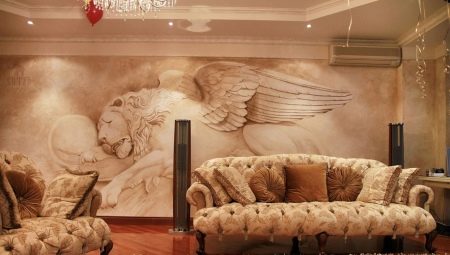
Decorating the living room with wallpaper, paint, various panels are quite popular solutions. However, it is depressing for its stereotyped and monotony. You can stand out and create a pleasant appearance with the help of a painting in the living room. Unfortunately, few people know how this is done.
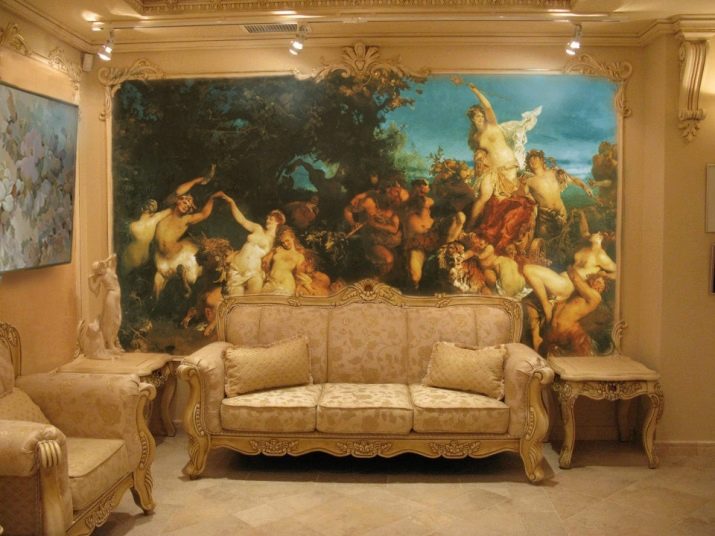
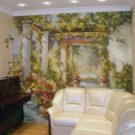
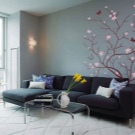

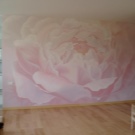
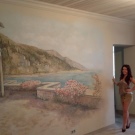
Peculiarities
Decorative decoration of the walls of houses began in those distant times, when these "houses" were mainly caves. But despite all the innovations and repeated updating of the range of materials, the painting retains its popularity.
When choosing a subject for such drawings, they first of all pay attention to landscapes. Walls with this design will look original in any environment.
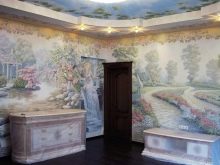
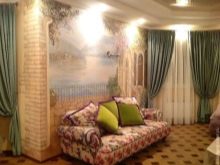
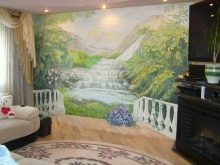
In many cases, painted walls occupy the main part of the room. This solution allows you to attract a maximum of interested and even enthusiastic views. Wall murals are also practiced. In any case, wallpaper for painting or decorative plaster are the best finishing materials. Often, bare concrete is also painted, covering it with a primer and background paint.
All that is required for independent work is a clear choice of drawing technique and knowledge of its specifics.
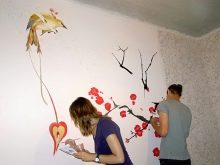
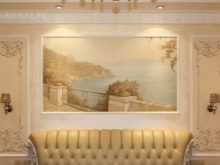
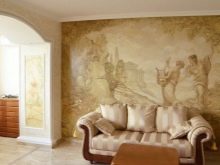
Techniques and preparation for work
In most cases, the drawing on the wall in the hall is formed using one of three techniques:
- stencil;
- volumetric;
- embossed.
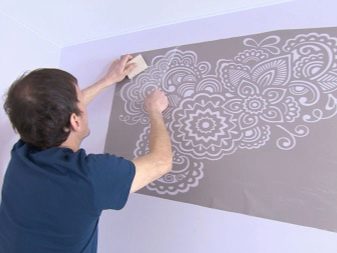
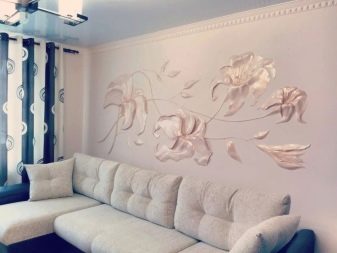
Note in advance that the surface on which the image is applied is quite important. The painting will look best on areas painted in one color. Patterns should be treated with great care. Because of them, the background can become heavier, and sometimes there is still some overload of the room design.For self-painting, of course, you will need paints.
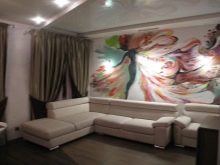
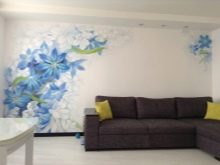
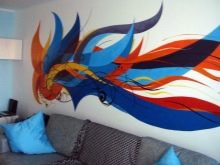
Experts recommend using acrylic-based dyes. They will not give off harsh odors.
Applying acrylic paint is very simple and takes very little time to dry. As for the brushes, it is worth taking a universal set of 5 brushes. Additionally, they purchase transparent paper (you can use a simple tracing paper), which allows you to decorate surfaces using stencils.
To paint walls with ornaments, carbon paper comes in handy. Sandpaper will help wipe off any sagging or roughness. And the finishing can be done with acrylic varnish.


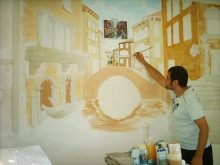
Before starting work on painting, the surface is certainly leveled. To do this, use a spatula and a gypsum-based solution that reliably bridges chips, scratches and cracks.
Once the base is leveled and prepared, it can be processed in a wide variety of ways. Even painting with decorative paint in one layer will greatly improve the situation. But in most cases, of course, more presentable solutions are used. Having chosen a certain drawing, you need to finalize it in a graphics program on a PC.
Important: the revision is carried out in black and white in order to check all the strokes and contours as clearly as possible.
Then, when the project is completed, a pencil sketch is applied to the wall. After its formation, the drawing is carried out with paints more carefully. To transfer the drawing to the surface, carbon paper is used. As soon as it is transferred, the ornament needs to be colored. As you can see, in technical terms, everything is relatively simple, but you need to work as carefully and accurately as possible.


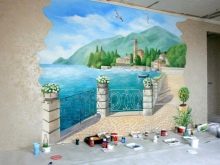
Airbrushes can be used to create paintings of any style. These tools can create drawings without strokes and with very smooth color transitions. The only condition is that initially the surface must be perfectly flat. Technically, everything is very simple: the paint is blown out with a stream of compressed air. Drawings will look easy and get an "airy" texture.
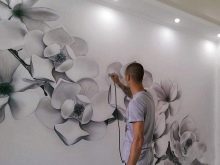


But old-fashioned, covered with glory of millennia, the technique of frescoes is not inferior to airbrushing in its attractiveness. On the contrary, it has a unique flavor. The frescoes are very durable and can last for years. This technique can be used to form not only old-fashioned subjects, but also images in the spirit of modern painting.
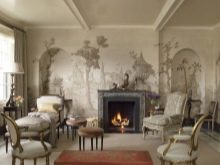
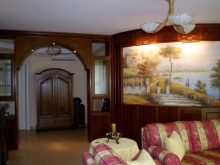
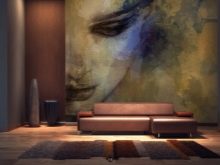
Also noteworthy is the technique of using fluorescent paints. Glow in the dark allows you to create a wide variety of images - and they are all equally unique. Most often, fluorescent painting is used to form patterns of the starry sky, thanks to which the boundlessness of space is imitated. But you can use other plots, the choice between which is a matter of purely personal taste.
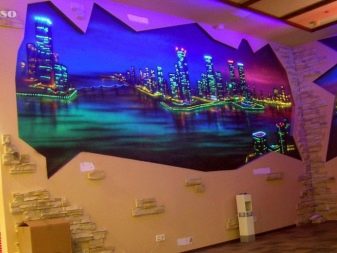
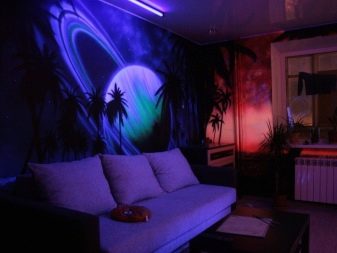
If you want to express your solid artistic taste, you should use the technique of volumetric stencil painting. Another advantage is there is no need to master complex and sophisticated techniques.
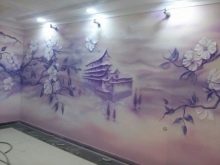
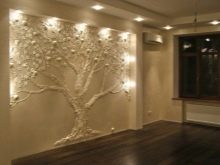
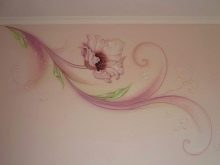
How and how to paint the living room?
Plots with heroes of folk tales and cartoons are unlikely to be suitable in this room. But landscapes and abstract motives will look much better. When choosing a specific plot, you need to consider:
- room dimensions;
- layout;
- orientation of space relative to the cardinal points;
- quality of natural light;
- design style;
- personal preferences;
- fashion trends;
- tastes of people who will frequent the house.
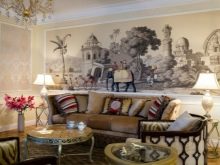

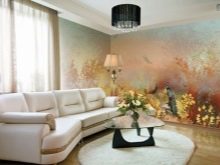
The classic style of painting is good because there is no doubt: it will remain in fashion and will not look archaic, old-fashioned. The characteristic features of the classics are the harmonious combination of lines and geometric shapes, colors and materials. An expression of this trend is the so-called ideal landscape. It looks realistic, but at the same time it is perceived romantically and even enthusiastically.
An important plus is that at the end of the first decade of the 21st century, classical painting became more fashionable than other styles.
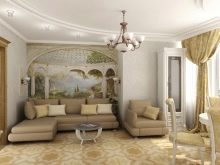
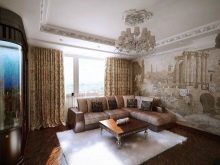
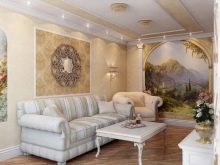
More old fashioned styles - empire and baroque. These are two branches that became the logical development of classicism. The baroque compositions demonstrate luxury and sophisticated decorative solutions. In an Empire setting, laconic compositions and relatively simple solutions are more appropriate. But these nuances are not all.
The choice between Empire and Baroque is determined by:
- style;
- the size of the rooms;
- the scope of the design concept.
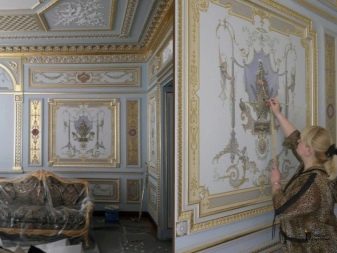
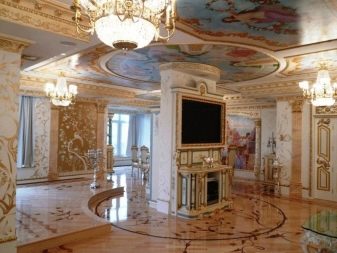
You can easily recognize the painting in the spirit modern (alternative name - Art Nouveau). It is dominated by lush geometric shapes. A complex floral ornament of wavy lines is necessarily used. Unconditionally dominated natural colors. Juicy tones are used only occasionally.
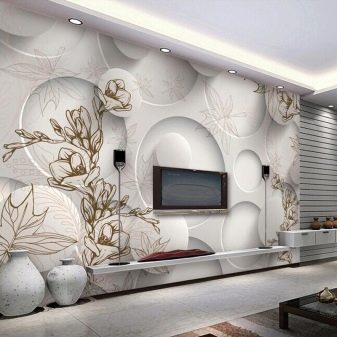
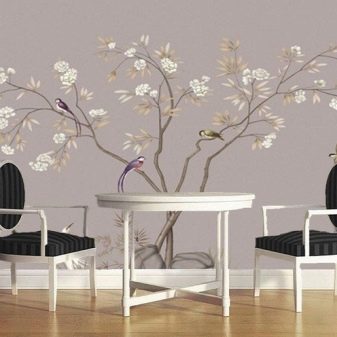
You can paint the living room in Japanese style. But it is not necessary to reduce the painting to the following plots (although these are also very beautiful examples):
- to landscapes classical for the East;
- to sakura and other flowering plants;
- to small houses and courtyards with a characteristic design;
- to objects that convey the national flavor.


A more modern Japanese-style revision implies emphasis on anime motives... By its typical features, even a person who is little versed in this direction of art will distinguish this style. But still, in Russia, the traditional version is used more often.
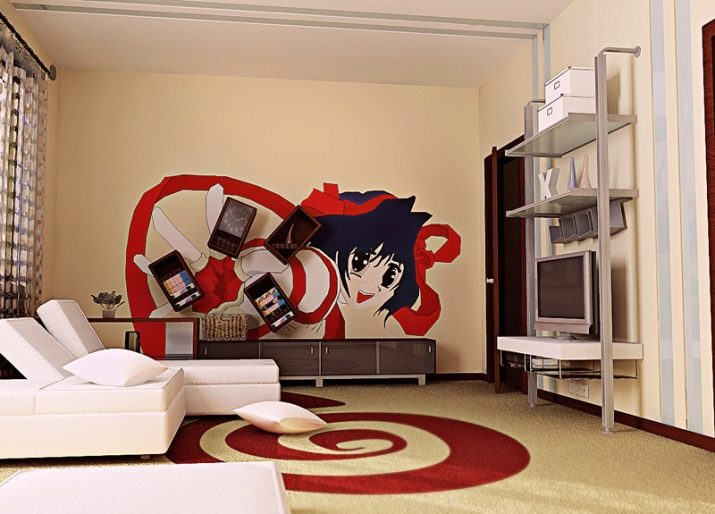
A style such as minimalism... Sometimes the whole design comes down to the use of a single strip or figure.
But in such cases, designers must work out the drawing as balanced as possible so that it looks expressive.

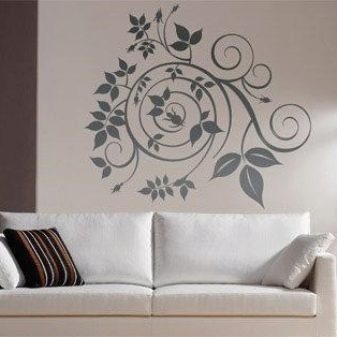
See the following video for a master class on painting walls in the living room.








